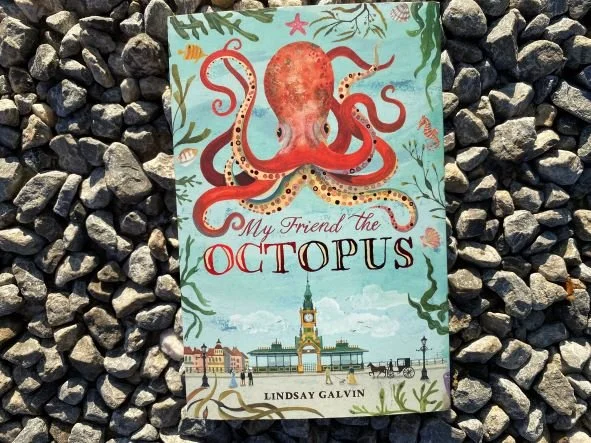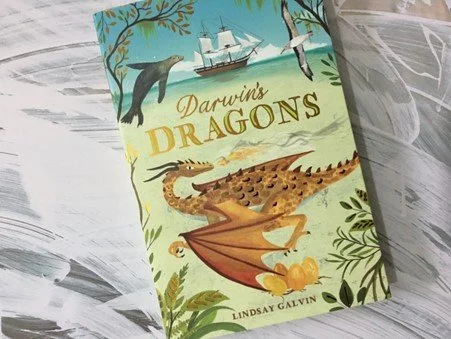My Friend the Octopus
When her mother, a successful milliner, suddenly whisks Vinnie away from everything she knows in London to live in Brighton with her Aunt Bets, her world is turned upside down. The two have never been separated yet now her mother has travelled to Paris on business, leaving Vinnie to a very different life with far more freedom and many new experiences. Vinnie is particularly drawn to the aquarium where she is enchanted by the newest acquisition, a ‘rare gargantuan devil-fish’- a giant octopus. Through observation and patience, Vinnie gradually comes to know this creature, using her sketching skills to capture her unusual friend.
‘My Friend the Octopus’ is a fabulous, many layered story which is full of colour and historical detail. Set in Victorian times, the novel offers much to enjoy, both as a read aloud and as a key text to inspire work from a class, including the attitude of ‘collectors’ and animal well being, working conditions, the role of women and racism.
The aquarium shows the stark contrast between those who care for animals and are keen to learn about them and consider their well being and those who see them as possessions or as a way of making money. Along with Vinnie, Mr Lee, the aquarist in charge of the animals, and his nephew, Charlie, show patience and curiosity, a willingness to learn about the octopus whilst caring for it. For Captain Bickerstaff, the octopus is a ‘slippery beast’, a way to generate income for the aquarium. There is so much to discuss and explore here, considering how attitudes have (or have not) changed and no doubt inspiring a fascination for these amazing creatures to equal Vinnie’s.
Child labour during Victorian times is something children are regularly taught about, but which often focuses on chimney sweeps or factory workers. By introducing the girls caught in the fashion trade, Lindsay Galvin exposes the cruel conditions endured and the consequences of fulfilling the caprices for a certain style or trend. Parallels can be drawn with today’s ‘fast fashion’ and the exploitation of cheap labour to meet this demand.
The book is rich in historical details which make it a delight to read. The risqué nature of bathing and riding a bicycle show how women like Aunt Bets are enjoying new freedoms, but the story also exposes the frustrations of the rigid expectations for women at this time. Notes from the author at the end of the book allow the reader to learn more about some elements of the story and there is a recipe for ‘Petits Fours à thé’ which I have every intention of making when I have a moment!
At the heart of the story is Vinnie, who blossoms into believing in herself under the care and nurture of Aunt Bets who constantly encourages her to ‘get doing’- a positive message for all of us. Her friendships with Charlie and Temitayo are beautifully developed and each character has a fully developed personality and ‘story’ of their own. The ‘baddy’ is truly sinister- no one would want to meet him anywhere- making the twists of the plot full of tension.
I really enjoyed ‘Darwin’s Dragons’ (and ‘The Secret Deep’), but in ‘My Friend the Octopus’, Lindsay Galvin has written an absolute treasure! The cover is beautifully illustrated with fold out flaps to explore, making an enticing start to an excellent book.
My Friend the Octopus Lindsay Galvin
Chicken House ISBN: 978-1913696405
You can read my review of ‘Darwin’s Dragons’ here and ‘The Secret Deep’ here.

